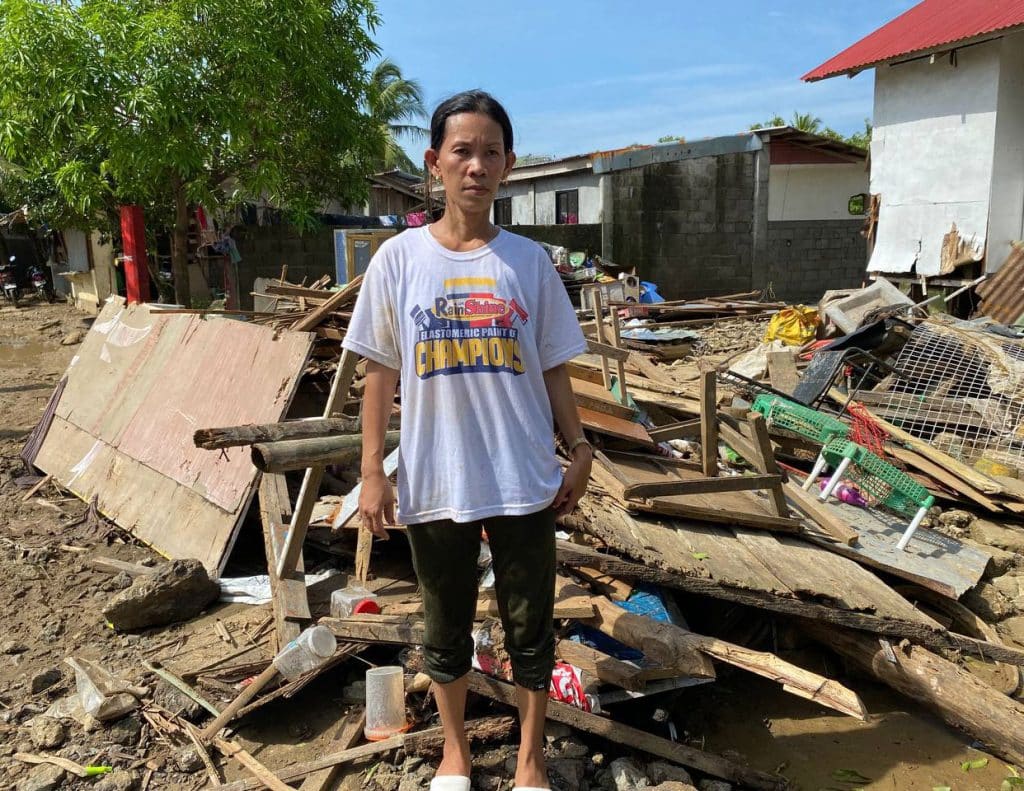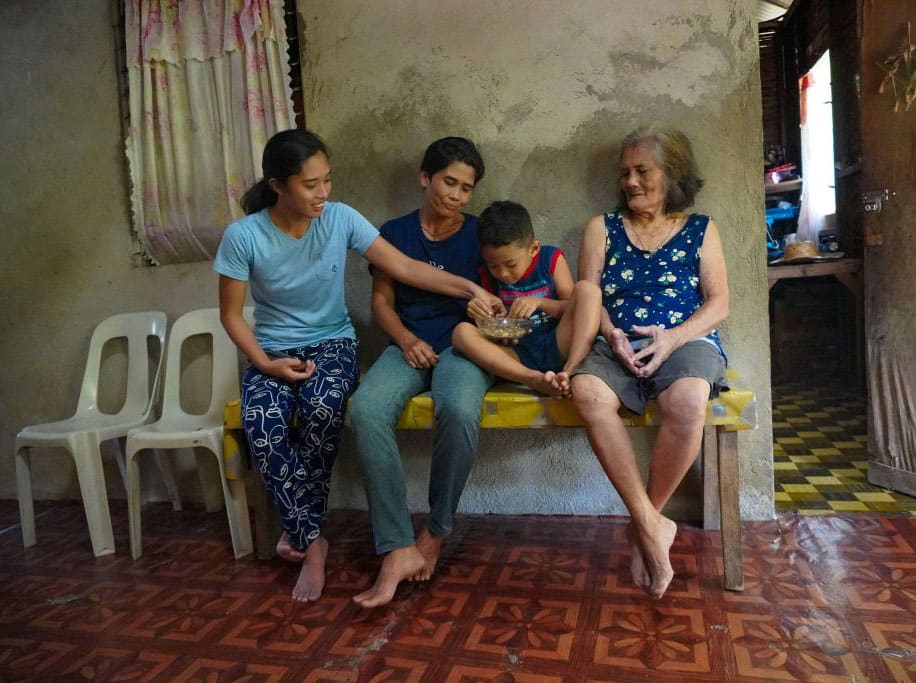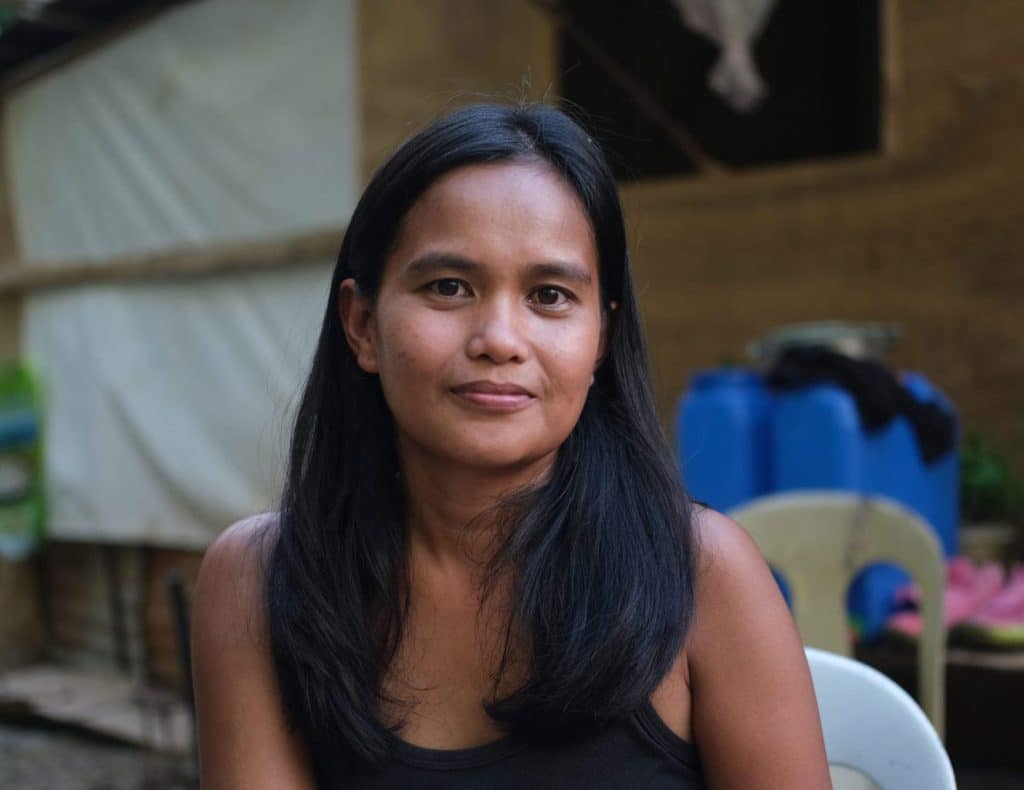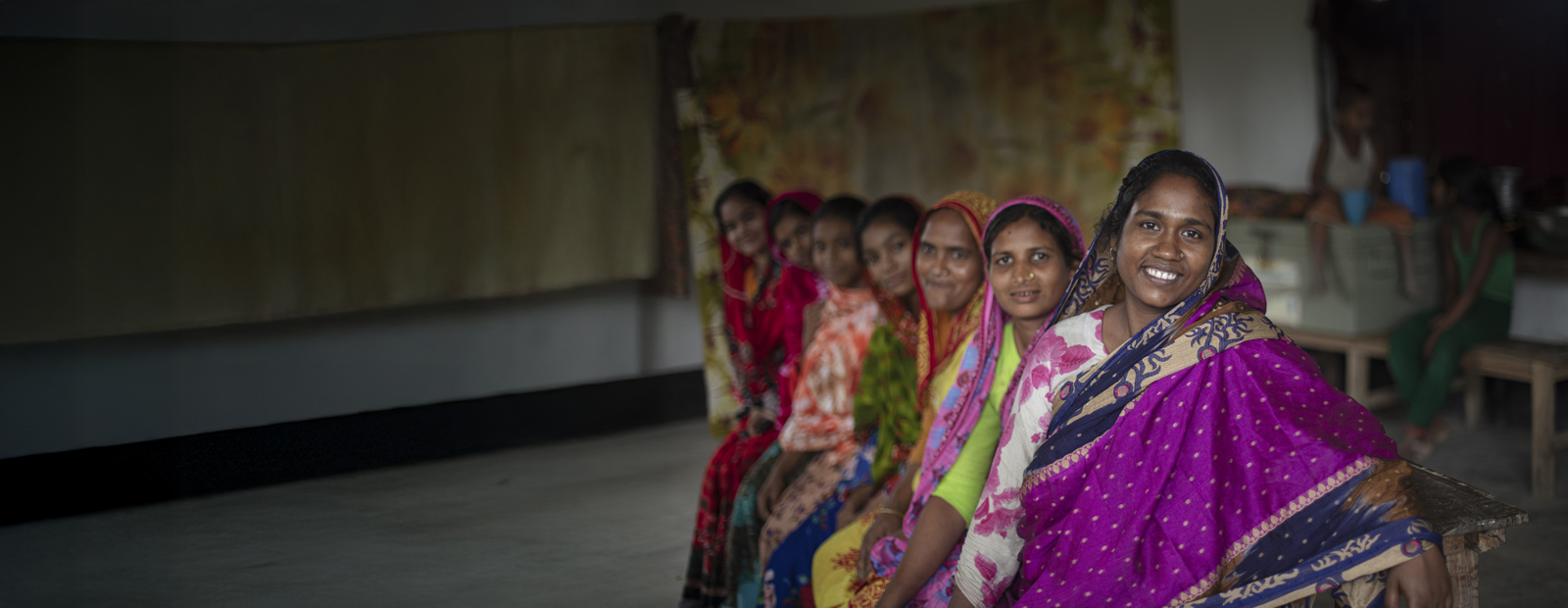CARE has been providing emergency relief and development assistance in the Philippines since 1949.
CARE in the Philippines works closely with local communities and non-government organisations across the country, focusing on several key areas to support families before, during, and after a crisis including:
- Preparing for disasters: We help communities in both rural and urban areas prepare for disasters and adapt to the effects of climate change.
- Providing emergency support: During a crisis, we provide life-saving assistance including food, shelter, cash support, clean water, and sanitation.
- Helping families recover: We support long-term recovery by helping families rebuild, focusing on healthcare, creating ways to earn a living, and supporting women’s economic growth.
At the frontline of climate change
The Philippines is the country facing the highest risk of disasters in the world. It has been ranked number one in the World Risk Index three times, most recently in the 2024 report. This ranking highlights the country’s susceptibility to the effects of climate change.
In late 2024, this risk became a devastating reality in a way the nation had never seen before. For the first time in the Philippines’ recorded history, a series of six tropical cyclones struck the country in less than a month. Typhoons, including Kristine (Trami) and Pepito (Man-Yi), unleashed heavy rains that caused severe flooding and landslides. The rainfall also triggered destructive mudflows (lahar) from the Mayon Volcano, which severely impacted lives and livelihoods.


The human cost
This rapid succession of storms has had a staggering impact on communities, with the same areas being hit repeatedly. The sequence of disasters has:
- Affected 14.3 million people
- Resulted in 174 deaths and 25 missing people
- Displaced more than 1.4 million individuals from their homes
- Damaged 315,777 houses, with 36,000 completely destroyed
The climate crisis is not a future threat in the Philippines; it is an ongoing emergency. Months after the first storm, tens of thousands of people remain displaced, with over 47,000 individuals still unable to return home as of January 2025. Affected communities are confronting critical shortages of water, sanitation, food, and healthcare. The strength Filipino communities show is an inspiration, but the scale of this crisis is immense, and they need support to face the long road to recovery.
Meet Miriam
When Super Typhoon Egay (international name: Doksuri) struck the Philippines in July 2023, its rapid intensification took many by surprise. It dumped more than a month’s worth of rain in two days, damaged some 56,000 houses, and affected three million people.
Miriam Bisares, 31, lost her home and almost all possessions. She lives with her husband and three children in a barangay (village) by a river in Abra, one of the worst-hit provinces. Running to safety that day was not easy. Her two older kids, ages 14 and 12, were ill with chicken pox and had to be carried. The flood submerged the paths to higher ground, so they had to cut a way through a thick tangle of grass and shrubs.
Today, her community remembers it as a difficult time, but alongside memories of the trials are ones of coming together and rebuilding. And despite the challenges, women like Miriam demonstrated capable leadership, playing a crucial part in helping her community learn how to become more resilient by building safer homes, with support from the European Union Humanitarian Aid and the ACCESS Project.
In the 14 years Miriam’s family had lived in Barangay Sao-atan in Bangued, Abra Province, they hadn’t experienced flooding as destructive as Super Typhoon Egay. Their old shack — made of light materials and located a few meters away from the edge of a river cliff— was swept away completely.
That Barangay Sao-atan lies next to a river is both a blessing and a burden: on the one hand, residents get to plant crops on its fertile banks; on the other, it makes the village flood-prone. The river also serves as a source of water for household use. During the rainy season, however, the water becomes murky and unusable. During dry spells, the river contracts, and residents have to climb down and up the steep river cliff while balancing one or two buckets.
The day Super Typhoon Egay struck
At around 10 A.M., the water rose quickly. Amid heavy rain and howling winds, Miriam’s family left their house and sought temporary shelter in this hut, which sits on slightly higher ground, further away from the river. By 6 P.M., the water was at their feet again. With a big knife, they slashed a path through the bushes to escape.
Months after the typhoon, damaged plastic “durabox” cabinets, scrubbed clean of mud and left to dry out in the sun, still litter the village. Miriam’s family lost almost everything. Fortunately, her eldest had the presence of mind to save important documents, such as birth certificates, and even her parents’ high school diplomas.
When the floodwaters receded, cleanup—a collective community endeavor—commenced. Through the ACCESS Project, Miriam and other residents severely affected by the typhoon received shelter assistance through repair kits and training sessions on how to build back safer. The project encouraged the community to work together to rebuild each other’s homes. It also formed a shelter roving team; a group of community members that ensured houses were repaired or rebuilt properly. As part of the team, Miriam became well-versed in Building Back Safer (BBS) principles. She can explain why having strong bracing, interlocking joints, anchored posts, and other BBS techniques are key to building safer homes.
Miriam and her family moved into their new house a month before Christmas.
“It’s a huge difference. We’re safe and comfortable here. We don’t worry about the water reaching us in the event of a typhoon.” – Miriam
The project also provided water, sanitation, and hygiene (WASH) assistance by building a water system and holding hygiene promotion activities. There are shaded benches near the water system where women sometimes congregate, working on chores together, or just staying for a chat.
These days, Miriam and her husband are focused on taking care of the children. Asked what aspirations she has for the family, she says: “I hope we can support the three of them so they can finish school and have a better future.”

Donate now
Support our ongoing work to create a more equal world.
Your donation can help end extreme poverty and give people the means to build a better future for themselves in countries like the Philippines.
For those living in extreme poverty, your support brings education and training, healthcare and clean water, nutritious food, and new ways to earn an income. And in times of crisis, you help us deliver emergency relief. Please donate today.
Video stories:
More than a roof: How a father rebuilt after a typhoon
Frontline Heroes: Empowering Community Health Workers in Talim Island
Maricel’s Harvest: A Story of Change
Read more about our ongoing impact in the Philippines here.

